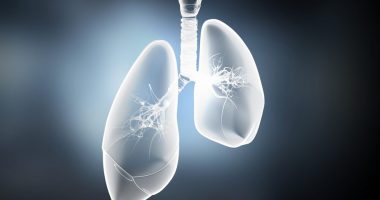New Robust 3D Microtissue Model May Better Screen IPF Therapies

Scientists have developed a new lab-grown three-dimension (3D) microtissue model that replicates the key features of the idiopathic pulmonary fibrosis (IPF) microenvironment better than other cellular and animal models, and that enables more robust screening of potential therapies.
When the model was generated using lung cells collected from IPF patients, it allowed researchers to assess responses to four experimental therapies and reflected the natural response variability between patients, highlighting its potential to be used in personalized medicine, the researchers noted.
“Many organoid [mini-organ] and lab-on-a-chip platforms can be hard to use,” David Wood, PhD, the study’s senior author and an associated professor of biomedical engineering at the University of Minnesota-Twin Cities, said in a press release.
“What’s exciting is that this system is very easy to use,” and “we’ve already disseminated it to two other labs who are using it completely independent of us,” Wood added.
The development and validation of the microtissue model was described in the study “A scalable 3D tissue culture pipeline to enable functional therapeutic screening for pulmonary fibrosis,” published in the journal APL Bioengineering.
IPF, a form of pulmonary fibrosis with no clear cause, is characterized by excessive wound healing that results in scarring (fibrosis) and increased stiffness of lung tissue, making it difficult for patients to breathe.
Excessive wound healing is associated with fibroblast activation, or maturation, into myofibroblasts — the main drivers of lung fibrosis that produce excessive amounts of extracellular matrix (ECM) molecules. ECM molecules surround and support cells, but when overly produced, can cause tissue scarring.
With air pollution levels rising and the ongoing COVID-19 pandemic, the incidence of IPF is anticipated to rise, further emphasizing the need for strong model systems to identify more effective therapies.
“Established models have proven incapable of accurately predicting therapeutic response, partly attributable to an inability to reflect biological aspects of the disease,” the researchers wrote.
These missing biological features include IPF’s progressive nature in the case of the gold standard mouse model, and its fibrotic microenvironment in the case of high-throughput cellular models used in therapy screening.
“It’s really important to have lab tools and models that create and control the microenvironment in which the cells sit, because this may be key to preclinical identification of possible treatments,” said Katherine Cummins, the study’s first author and a PhD student of biomedical engineering in Wood’s lab.
Now, Wood and Cummins, along with colleagues at the University of Minnesota and at Mayo Clinic in Rochester, have developed a 3D microtissue model that recapitulates critical features of the IPF microenvironment, including cell-cell and cell-ECM interactions and biological mechanisms.
In addition, the platform’s size and simplicity make it suitable for use in high-throughput treatment screening studies.
The model is made of human lung fibroblasts encapsulated within microspheres of collagen, a major ECM molecule.
The researchers showed that, with this model, healthy fibroblasts can be pushed toward maturation into myofibroblasts via exposure to TGF-beta (a major pro-fibrotic molecule), and that this event increased cells’ contractility and promoted ECM overproduction and remodeling — all hallmark features of IPF.
In addition, treating these microtissues with approved IPF therapies — Ofev (nintedanib) and Esbriet (pirfenidone) — resulted in beneficial effects, emphasizing the model’s potential utility for treatment screening.
The team also found that lung fibroblasts from IPF patients maintained their fibrotic features when placed within collagen microspheres and promoted ECM deposition and remodeling.
These findings validated the new system as a 3D cellular model of IPF, confirming the relevance of using TGF-beta-activated microtissue, which “exhibited largely overlapping [features] with microtissues formed from [IPF patient]-derived cells,” the researchers wrote.
Furthermore, patient-derived microtissues responded to four experimental therapies targeting epigenetic mechanisms that were identified in a previous 2D cellular screen. Epigenetics is the study of chemical modifications that can turn genes on or off without altering their actual DNA sequence.
Fibroblasts from different patients responded differently to these therapies — reflecting treatment response variability seen among people with IPF — but a high dose of SRT-1720, a therapy currently being evaluated in kidney and heart fibrosis, led to beneficial effects in all. These results support further evaluation of SRT-1720’s benefits in IPF, the team noted.
“The described microtissue platform has enhanced biological relevance over 2D screening while retaining throughput that is unviable in 3D and in vivo models,” the researchers wrote.
“We believe that the IPF microtissue model is exceptionally suited to aid in therapeutic development by improving the IPF [treatment] screening pipeline,” the team wrote.
In addition, the system has the potential to be used to study other diseases “in which 3D culture is important and tissue remodeling is prevalent, including but not limited to other fibrotic disease[s], cancers that present as solid tumors, and diseases interfering with wound healing,” the researchers concluded.









